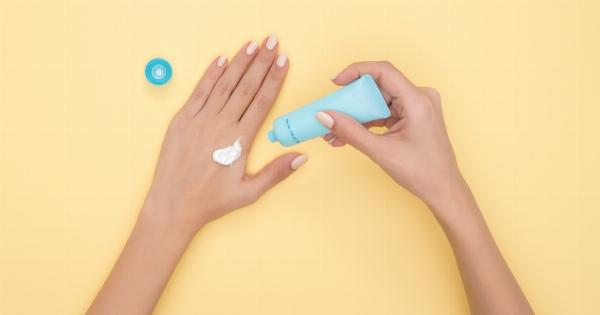When it comes to protecting your skin from harmful UV rays, sunscreen is an essential part of any skincare routine. However, with so many options available on the market, it can be overwhelming to choose the right type of sun protection.
Should you opt for a spray, lotion, or stick? In this article, we will explore the advantages and disadvantages of each format to help you make an informed decision.
The Benefits of Sunscreen Sprays
1. Easy Application: One of the biggest advantages of sunscreen sprays is their easy application. The spray format allows for quick and even coverage, making it ideal for those hard-to-reach areas like your back.
2. Lightweight and Non-Greasy: Sunscreen sprays are typically lightweight and non-greasy, which is perfect for those with oily or acne-prone skin. The formula absorbs quickly, leaving behind no residue or shine.
3. Convenient for Reapplication: Sprays are an excellent option for reapplying sunscreen throughout the day, especially if you’re wearing makeup. They can simply be sprayed over your face without smudging or ruining your carefully done makeup.
The Drawbacks of Sunscreen Sprays
1. Inhalation Risks: A major concern with sunscreen sprays is the risk of inhalation. When applying a spray, there’s a higher chance of breathing in the sunscreen particles, which may not be safe for your lungs.
It is essential to always apply sprays in a well-ventilated area or outdoors to minimize exposure.
2. Uneven Coverage: While sprays offer easy application, achieving an even layer of sunscreen can be challenging. Windy conditions or improper spraying technique may result in uneven coverage, leaving certain areas of your skin vulnerable to sun damage.
3. Environmental Impact: Some sunscreen sprays contain chemicals that may harm the environment, especially marine life. When using sprays, it’s crucial to choose reef-safe options to minimize your ecological footprint.
The Advantages of Sunscreen Lotions
1. Superior Coverage: Sunscreen lotions provide excellent coverage and are easier to spread across the skin, ensuring every inch of your body is protected. They offer more control over the amount applied compared to sprays or sticks.
2. Hydrating and Moisturizing: Many sunscreen lotions contain moisturizing ingredients that can help keep your skin hydrated.
This is particularly beneficial for those with dry or sensitive skin, as it provides a double-duty solution by protecting against the sun’s rays and hydrating the skin.
3. Long-Lasting Protection: Sunscreen lotions typically provide longer-lasting protection compared to sprays. The thicker consistency forms a barrier on the skin, offering a more reliable defense against UV rays.
The Disadvantages of Sunscreen Lotions
1. Longer Drying Time: Sunscreen lotions often take longer to dry compared to sprays or sticks. This can be inconvenient, especially if you’re in a hurry or need to get dressed immediately after application.
2. Potential for Greasiness: Some sunscreen lotions may leave a greasy residue on the skin, especially if you apply a higher SPF. This can be uncomfortable and may not be suitable for those with oily skin types.
3. Reapplication Challenges: Reapplying sunscreen lotions can be tricky, especially if you’re wearing makeup. The need to rub the lotion onto your skin may cause your makeup to smudge or become uneven.
The Benefits of Sunscreen Sticks
1. Targeted Application: Sunscreen sticks offer precise and targeted application, allowing you to easily protect specific areas like your face, nose, lips, or ears. They are a convenient option for on-the-go touch-ups.
2. Portable and Travel-Friendly: Sunscreen sticks are compact and easy to carry, making them perfect for travel or throwing in your bag for everyday use. Their solid format eliminates the risk of leaks or spills.
3. No Greasy Residue: Sunscreen sticks generally have a non-greasy formula, which is ideal for those who dislike the feeling of lotion or spray on their skin. The easy glide-on application leaves behind no residue.
The Drawbacks of Sunscreen Sticks
1. Limited Coverage: Due to their small size, sunscreen sticks may not provide sufficient coverage for larger areas of the body.
If you’re planning a day at the beach or a long outdoor activity, a stick alone may not be enough to protect your entire body.
2. Less Hydrating: Sunscreen sticks are not as hydrating as lotions, as they often have a drier consistency. If you have dry or sensitive skin, using a stick alone may not provide the moisture your skin needs.
3. Difficult Application for Some Areas: While sticks excel at precise application, they can be more challenging to apply on curved or contoured areas of the body. This may result in uneven coverage or increased effort to ensure full protection.
Choosing the Right Sunscreen For You
Ultimately, the choice between sunscreen spray, lotion, or stick comes down to personal preference and individual needs. Here are some factors to consider when making your decision:.
1. Skin Type: Consider your skin type when selecting a sunscreen format. For oily or acne-prone skin, sprays may be the best option, while those with dry or sensitive skin may prefer lotions or sticks for added hydration.
2. Ease of Application: If convenience and quick application are your priorities, sprays or sticks may be more suitable. On the other hand, if you prefer a more controlled application or need broader coverage, lotions might be the way to go.
3. Portability: If you’re frequently on the go, a sunscreen stick or travel-sized spray may be the most convenient option. They can be easily thrown into your bag or carried in your pocket without the risk of spillage.
4. Environmental Considerations: When selecting any sunscreen product, be mindful of its impact on the environment. Look for reef-safe options that do not contain harmful chemicals that can harm marine life.
Remember, regardless of the sunscreen format you choose, it’s important to apply and reapply regularly, especially during prolonged sun exposure.
Protecting your skin from damaging UV rays is crucial for maintaining its health and minimizing the risk of skin cancer.





























